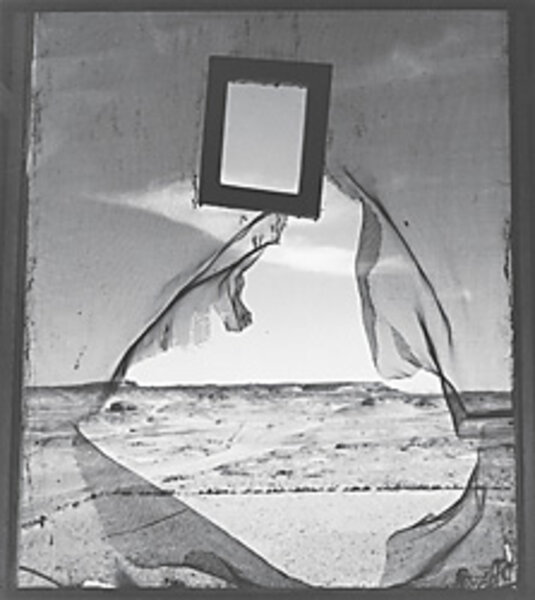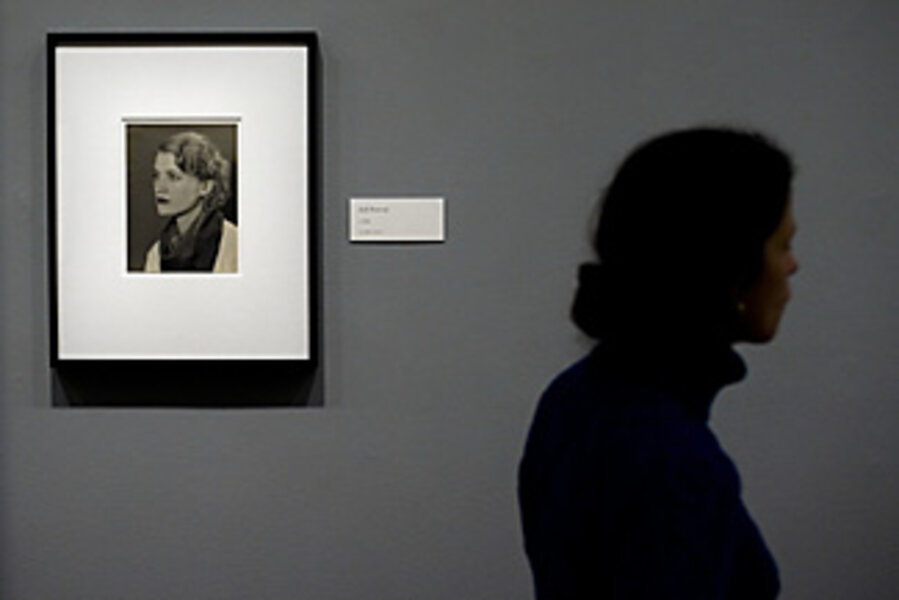Lee Miller's lens on the 20th century
Loading...
The legend of art and war photographer Lee Miller (1907-1977) perhaps began when Elizabeth Miller from Poughkeepsie, N.Y., chose to abbreviate her first name to Lee. Modern, informal, with a hint of panache, that name would help carry this daughter of an amateur photographer into the center of the 20th century's whirlwind of events – from which she would emerge as a key player and important artist.
Among the world's small cadre of renowned woman photographers, Lee Miller has become an icon and mythic figure of fascination for many. Her photographs are compelling, but her reputation transcends them, to a point where her life story has become inextricable from her art.
Now, Miller's life and work are being newly explored in an exhibition – "The Art of Lee Miller" – at the Philadelphia Museum of Art, honoring her centenary with a selection of more than 100 of her photographs. The impetus for the show, which originated in London, is Antony Penrose, Miller's son from her marriage to British Surrealist Roland Penrose.
Mr. Penrose, who spoke at the opening of the exhibit, said that his mother, who struggled with alcoholism during his childhood, almost never talked about her accomplishments as a photographer. When she died, he discovered boxes of her negatives and has devoted his life ever since to reestablishing her reputation as a photographer.
If much of the knack of being a successful photographer is about being in the right place at the right time, Miller certainly was. She arrived in Paris in 1929 soon after the dawn of Surrealism and got to know Man Ray, Pablo Picasso, and Jean Cocteau, developing a Surrealist style and attitude that defined her work.
When World War II arrived, she was there, one of only six accredited female war photographers in Europe. She photographed London during the blitz, Normandy after D-Day, and the liberation of Dachau concentration camp.
What is unusual about Miller is her mystique: a mysterious blend of who she was, what she did, and how she did it. Initially a New York model, Miller refused to be confined by the categories of fashion and appearance, rejecting style in favor of substance. In her war photography, she ultimately proved for an era that a beautiful woman can also be talented and brave. Indeed, it is difficult to think of a single other female photographer who started her career in front of the camera but chose to adopt a life behind it.
Miller was discovered by publishing magnate Condé Nast, who launched her career as a model by putting a drawing of her on the cover of Vogue in March 1927. Once in Europe, she fell in love with action and the frontiers of art and current events. Her life is best summed up in her own statement: "I'd rather take a photograph than be one."
Many of Miller's photographs bear the eerie stamp of Surrealism, the style that she discovered during the photographic work she did in Paris as an apprentice to expatriate American artist Man Ray.
Surrealism is said to be about dreamlike freedom from conventional constraints, and in her photography, Miller favored offbeat subjects like carousels, flea markets, and spilled tar. "She saw her world with a delicate, cool elegance," Penrose said of her photos in his 1985 book, "The Lives of Lee Miller."
But there was a point where Miller had had enough of Paris, and, in 1932, she temporarily returned to New York and established her own studio where she concentrated on commercial work and portraits.
In 1935, her life took an unexpected turn when she married Egyptian businessman Aziz Eloui Bey in New York and moved to Cairo. There, she took photos of desert life in her own inimitable style, such as the famous image of escape, "Portrait of Space," pictured here.
Adjustment to formal society in Egypt was difficult for the free-spirited Miller, and she left to live in England in 1939. Her photos of wartime Britain gained wide attention.
Tall, vibrant, and uncontainable, Lee Miller was a woman who broke new ground in art and in life. In the process, she has become nothing less than a legend who saw and recorded the upheavals of the 20th century through her own lens.
• "The Art of Lee Miller" will be at the Philadelphia Museum of Art until April 27. It will be at San Francisco MOMA from July 1-Sept. 21. It then travels to the Jeu de Paume, Paris, where it will be on exhibit from Oct. 14-Jan. 11, 2009.



